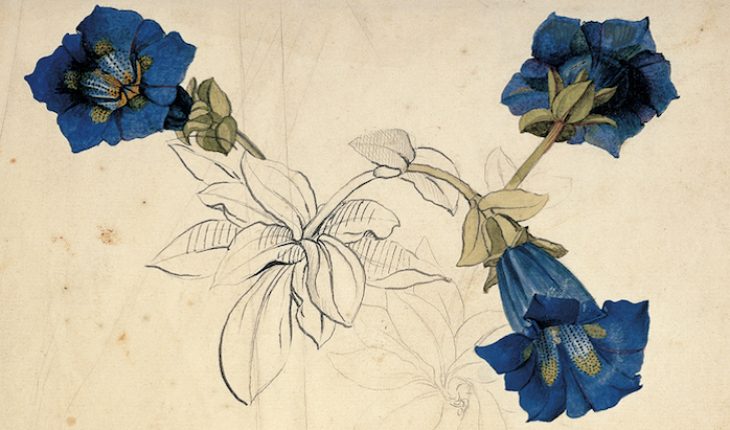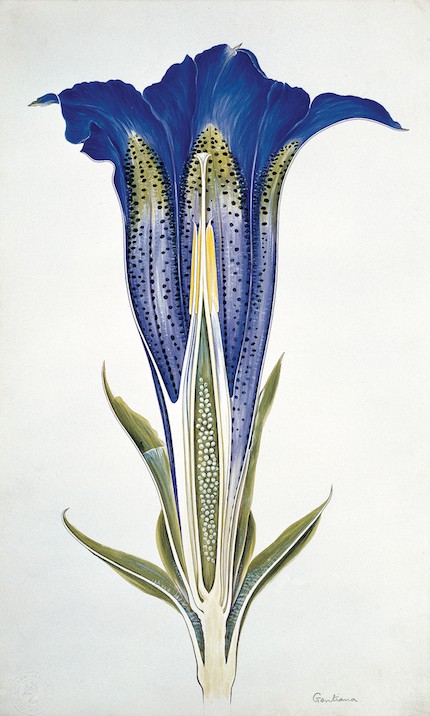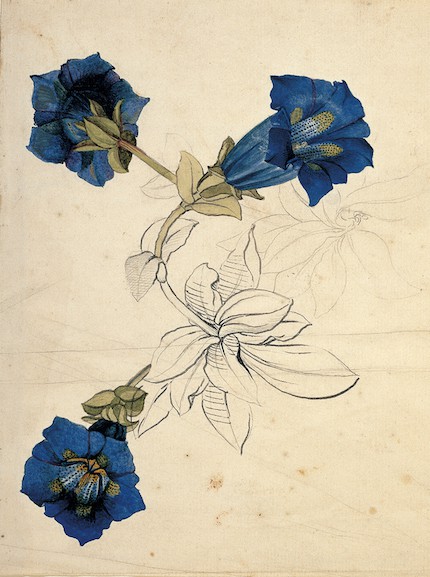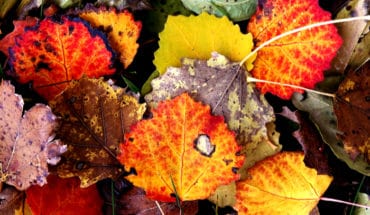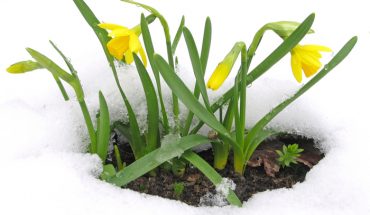Rebecca Wallersteiner Reviews Flora, Botanist Dr Sandra Knapp’s exquisitely illustrated new book explores the history and health-giving properties of plants and the intrepid explorers who discovered them
In her beautifully written new book Flora, botanist Dr Sandra Knapp draws on the rich archives of the Natural History Museum to illustrate the history and health-giving properties of 20 groups of plants that have come to our gardens and greenhouses from the four corners of the earth. “Being a scientist, I also wanted to show the connection between the visual art I so appreciated and the science I practise – a tenuous connection, one might say,” explains Knapp. Plants profiled in the book include daffodils, poppies, gentians, magnolia, tulips, iris and waterlilies and she also tells the remarkable stories of botanists and explorers who braved jungle, disease, slave traders and wars to collect them.
Flora’s most remarkable and little-known story is that of George Forest, an adventurous Scottish plant hunter, who travelled to China, in 1904, to collect specimens for Kew. Soon after he arrived rebellion broke out and all his party were slaughtered. Forster survived by fleeing into the forest, falling down a ravine and he survived for eight days, outwitting his pursuers. Disguised at a Tibetan monk the intrepid Scotsman trekked over mountains and returned home with previously unknown species of his beloved Gentians, now grown in our gardens. His discovery of Gentiana sino-ornata which grows on boggy ground at high altitudes, on a later trip, made possible by many of the hybrid deep-blue gentians cultivated in the rock gardens of the 21st century. Gentian is not only beautiful to look at, but is also used to cure illness. “Tonics prepared from the gentian root have been used for stimulating the digestive system and enhancing appetite. Gentian causes a slight elevation of blood pressure, which is perhaps the reason for the digestive effects,” explains Knapp. Gentian distillations have also been used as a cure for malaria, as are many bitter plant substances. It has also been used in witchcraft and as an antidote to love and poison. The roots of Gentiana lutea, the yellow gentian are used to make Gentian schnapps, though its bitter taste is not for everyone – but it supposed to help an upset stomach. The medicinal properties of gentians are based upon the fantastically bitter properties of all parts of the plant, but most particularly their dried roots. The chemical compounds responsible for this bitterness are the glycosides gentiociprin and amarogentin named appropriately after the gentian itself
Gentian isn’t the only plant which is used for its health-promoting magical and spiritual qualities. In Mexico, Morning-Glory plants were not only prized for their beauty but were also culturally vital and used as a narcotic in rituals. “The Spanish physician Francisco Hernandez, who travelled to Mexico in the years following the Spanish Conquest recorded the use of a plant called ololiuqui in divination.” This enabled their priests to communicate with the spirit world. The Spanish observed that ‘natives … communicate with the devil… when they become intoxicated with ololiuqui, and they are deceived by the various hallucinations which they attribute to the deity, which they say resides in the seeds.’ Dr Hernandez became fascinated by the priests’ trances and wrote that ‘when the priests wanted to communicate with their gods and to receive a message from them they use this plant to produce a delirium, during which a thousand visions and satanic hallucinations appeared to them.’ For years scientists were uncertain about the plant’s identity; some believed it to be a member of the nightshade family. Its true identity as a member of the Morning-Glory group of plants was established by the great Harvard Botanist Richard Evans Schultes. In the 1950s, self-experimentation by Humphrey Osmond, an American psychiatrist, revealed that ingesting Morning-Glory seeds led to apathy and listlessness, then followed by visions, and a relaxed feeling of well-being. Interestingly other scientists conducting similar experiments felt no such effects. When the hallucinogenic properties in these plants became widely known ingesting their seeds became popular amongst certain fringe groups in European and American society as you could buy packets of morning-glory seeds in corner garden shops. However, many people who chewed morning-glory seeds became nauseous and threw up. Several members of the Morning-Glory plant family have entered the botanical drug scene as substitutes for LSD. “They are almost a symbol of the multifaceted relationships that people have with the plants in their environments,” writes Knapp.
Before the invention of photography, Captain Cook took artist Sydney Parkinson and eminent botanist Sir Joseph Banks along on The Endeavour to record what they saw. Parkinson painstakingly illustrated many delicate, exotic plants which perished on the long voyage back. “We owe a huge debt to plant-hunters such as these who bought back jewels that were not only treasures themselves but also became the basis for gardens of the future,” writes Knapp.
Flora: An Artistic Voyage through the World of Plants, by Sandra Knapp, published by the Natural History Museum, September 2016, (hardback) priced at £30
Accompanying the book are 36 frameable colour prints, reproduced from Flora and printed on the highest quality paper
- Dance yourself well - 23rd June 2024
- Tipped to win Gold at The Chelsea Flower Show 2024 - 21st May 2024
- Jason and the Adventure of 254 - 5th May 2024
